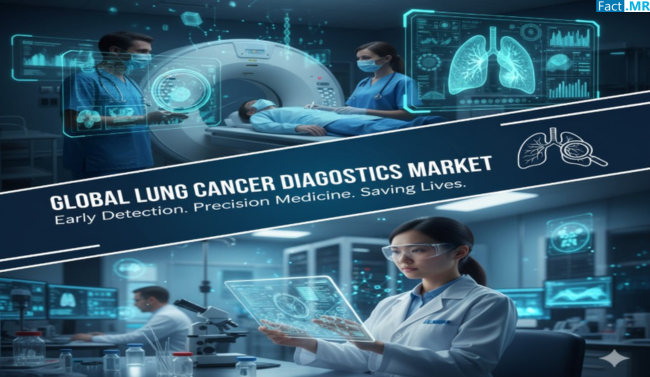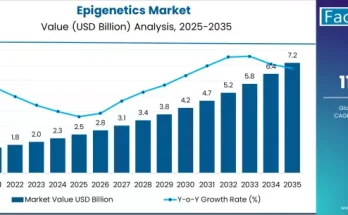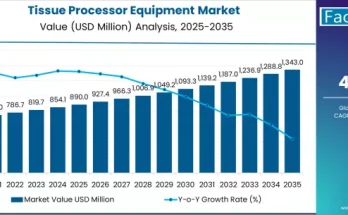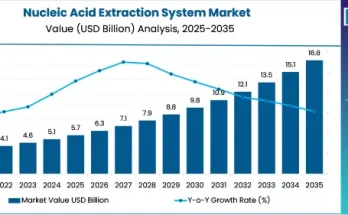Lung cancer remains one of the leading causes of cancer-related mortality worldwide. Early detection plays a pivotal role in improving survival rates and treatment outcomes. The lung cancer diagnostics market is witnessing significant growth as healthcare providers and research institutions adopt advanced diagnostic technologies to identify the disease in its early stages. With innovations in imaging, molecular testing, and biomarker analysis, lung cancer diagnostics is evolving into a critical component of personalized healthcare and precision medicine.
Market Overview:
Lung cancer diagnostics encompasses a variety of technologies and tools designed to detect cancerous changes in lung tissue and evaluate disease progression. These include imaging modalities such as CT scans, PET scans, and X-rays, as well as molecular diagnostics including biomarker testing, liquid biopsies, and gene expression analysis.
The market is also driven by the growing emphasis on early detection and screening programs. By identifying cancer at an early stage, healthcare providers can implement targeted therapies, monitor patient response, and reduce mortality rates. Diagnostics are no longer limited to traditional imaging; advances in genomics and proteomics are allowing clinicians to detect subtle molecular changes that indicate disease onset.
Key Trends & Drivers:
- Adoption of Advanced Imaging Techniques:Innovations in low-dose CT scanning, PET-CT, and MRI technologies have improved the sensitivity and specificity of lung cancer detection. These imaging modalities allow for early identification of small tumors that may otherwise go undetected.
- Rise of Molecular and Biomarker Testing:Molecular diagnostics, including liquid biopsies, are transforming lung cancer detection by analyzing circulating tumor DNA and other biomarkers in blood samples. These minimally invasive tests enable earlier diagnosis and help in tailoring targeted therapies for individual patients.
- Integration of AI and Data Analytics:Artificial intelligence is increasingly being applied to analyze imaging data, identify tumor patterns, and predict disease progression. AI-powered tools improve diagnostic accuracy, reduce false positives, and enhance the speed of clinical decision-making.
- Expansion of Screening Programs:National and regional initiatives promoting routine screening for high-risk populations are boosting demand for advanced diagnostic solutions. Public health programs emphasize early detection to improve treatment success and reduce the economic burden of lung cancer care.
- Focus on Personalized Medicine:The shift towards precision medicine is driving demand for diagnostics that can identify specific genetic mutations or molecular markers. This approach enables clinicians to prescribe targeted therapies that are more effective and associated with fewer side effects.
Applications Across End-Use Segments:
- Hospitals and Clinics:Hospitals are investing in advanced imaging equipment and molecular diagnostic tools to enhance patient outcomes. Diagnostic departments play a crucial role in early detection, staging, and monitoring therapy response.
- Diagnostic Laboratories:Independent and reference laboratories are increasingly offering specialized lung cancer testing, including liquid biopsy services, gene panel testing, and biomarker analysis. These labs contribute to faster diagnosis and comprehensive disease profiling.
- Research and Academic Institutions:Research centers are utilizing advanced diagnostic technologies to understand the molecular mechanisms of lung cancer, identify potential therapeutic targets, and develop new screening protocols.
- Pharmaceutical Companies:Pharmaceutical companies rely on accurate diagnostics for clinical trials, patient stratification, and monitoring the effectiveness of targeted therapies and immunotherapies.
Regional Insights:
- North America:The region leads in adoption of advanced lung cancer diagnostics due to well-established healthcare infrastructure, high awareness of early detection, and investments in cutting-edge technologies. Public health initiatives and screening programs contribute to the growing demand for diagnostics.
- Europe:Europe shows significant adoption of molecular diagnostics and imaging solutions. Stringent healthcare regulations and reimbursement policies promote early detection and personalized treatment strategies.
- Asia-Pacific:Rapid urbanization, increasing prevalence of smoking, and growing healthcare infrastructure are driving market growth in Asia-Pacific. Countries are focusing on awareness campaigns and expanding diagnostic capabilities to tackle the rising burden of lung cancer.
- Latin America & Middle East & Africa:These regions are witnessing gradual adoption of advanced diagnostic solutions. Increased government initiatives, awareness programs, and international collaborations are facilitating market growth.
Challenges & Restraints:
Despite technological advancements, the lung cancer diagnostics market faces several challenges:
- High Cost of Advanced Diagnostics:Cutting-edge imaging and molecular tests can be expensive, limiting accessibility in low-income regions.
- Limited Awareness in Certain Populations:Lack of awareness about early screening and risk factors hinders timely diagnosis in some regions.
- Technical Complexity:Implementing molecular diagnostics requires specialized equipment and trained personnel, posing operational challenges for smaller healthcare facilities.
- Data Privacy and Regulatory Compliance:Handling sensitive patient data for molecular diagnostics and AI-driven imaging necessitates strict adherence to privacy regulations.
Technological Advancements:
Recent innovations in the field of lung cancer diagnostics include:
- Next-Generation Sequencing (NGS):Enables comprehensive profiling of genetic mutations, helping clinicians select appropriate targeted therapies.
- Liquid Biopsy:Provides a non-invasive method to detect circulating tumor DNA, monitor treatment response, and identify resistance mutations.
- AI and Machine Learning Algorithms:Improve diagnostic precision by analyzing complex imaging and molecular data sets to identify early-stage cancer markers.
- Integrated Diagnostic Platforms:Combine imaging, molecular testing, and clinical data to provide holistic insights for personalized treatment planning.
Market Segmentation:
The lung cancer diagnostics market can be segmented based on technology, sample type, end-use, and application:
- Technology:Imaging, molecular diagnostics, biopsy procedures, and biomarker testing are key segments, each addressing specific diagnostic needs.
- Sample Type:Tissue biopsies, blood-based liquid biopsies, and sputum samples provide flexibility in diagnostic approaches.
- End-Use:Hospitals, diagnostic labs, research institutions, and pharmaceutical companies represent primary users of lung cancer diagnostic solutions.
- Application:Screening, early detection, treatment monitoring, and personalized therapy planning are main applications driving market demand.
Future Outlook:
The future of the lung cancer diagnostics market is shaped by technological innovation and growing emphasis on personalized healthcare. Continuous advancements in imaging, molecular diagnostics, and AI integration will enhance the speed and accuracy of diagnosis. Screening programs for high-risk populations are expected to expand, increasing early detection rates.
Emerging trends include the development of multi-modal diagnostic platforms, combining imaging and molecular profiling, and increased collaboration between healthcare providers, technology companies, and research institutions. These efforts aim to improve patient outcomes, optimize treatment strategies, and reduce the overall burden of lung cancer on healthcare systems.
Conclusion:
The lung cancer diagnostics market plays a critical role in combating one of the most challenging forms of cancer. By facilitating early detection, precision treatment planning, and real-time monitoring, advanced diagnostic technologies are transforming patient care. Healthcare providers, researchers, and technology developers are collaborating to create innovative solutions that improve survival rates and enhance the quality of life for patients worldwide.
As awareness grows and technology continues to advance, the demand for sophisticated diagnostic solutions will rise, making lung cancer diagnostics a cornerstone of modern oncology. Organizations that invest in comprehensive diagnostic platforms, AI-driven analytics, and personalized approaches will be well-positioned to lead the market and contribute to improved global health outcomes.



